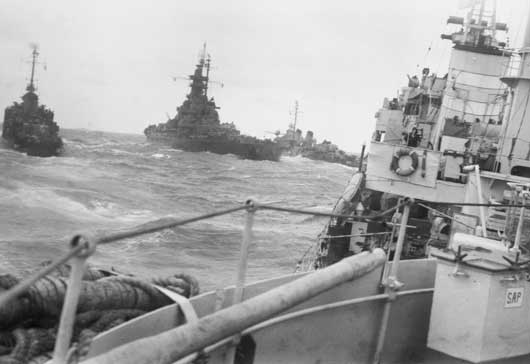Okinawa Attack on Japan, 1945
The Battle in Brief
The Battle of Okinawa, Operation Iceberg, was the largest amphibious assault launched by Allied forces in the Pacific Theatre of operations. On 1 April 1945, Americans began landing on a 15 kilometre strip of beach opposite two important Japanese airfields. The land battle lasted 82 days until 21 June 1945 and was hard-won with the allied fleet suffering severe casualties from numerous Kamikaze attacks. Okinawa lay only 540 kilometres from the Japanese mainland and was sought as a forward base for the bombing of Japan as well as a base from which an invasion of the mainland could be launched later in 1945.
Five US Army and three US Marine divisions fought at Okinawa and while all the ground troops were American, naval support include the British Fleet which was designated Task Force TF.57. The British aircraft carriers included about 25% of the naval aviation used at Okinawa. Australian destroyers HMA Ships Quilliam, Queenborough, Quickmatch, Napier, Nepal and Norman served with the 4th and 7th Flotillas of TF.57. Other Australian ships of the 21st and 22nd Minesweeping Flotillas and smaller craft were involved in patrolling, minesweeping, escorting and other tasks for the ships of TF.57 and the Logistics Group.
Okinawa was to be the last ground battle in the advance towards Japan, but by 15 August when Japan announced its surrender, the American Third Fleet and the British Pacific Fleet including HMAS Napier had been making surface and air attacks against the main Japanese islands of Honshu and Hokkaido.
Location
Media






